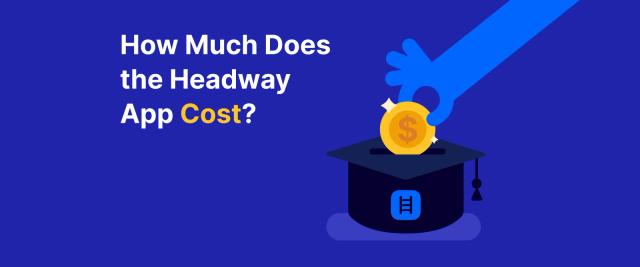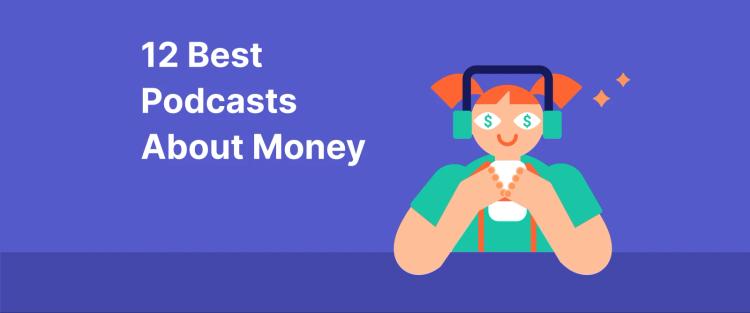House prices keep going up while your bank account stays basically the same? You want to buy a place, but every month something takes a bite out of your paycheck: rent, bills, food, or whatever emergency pops up. Real estate costs more every year, and that down payment feels like a fantasy.
Learning how to save money for a house has nothing to do with making tons of money or getting an inheritance. You need actual financial goals, know what to cut without hating your life, and find ways to save that stick. Homeownership feels impossible until you stop winging it and build a real plan.
Books like 'The Total Money Makeover' and 'You Need a Budget' show how regular people save for houses. Headway breaks those down into 15-minute reads so you get what works fast. Learn how to save money for a house tonight and knock out your financial goals.
📘 Download Headway and figure out how to save money for a house from people who've done it!
Quick answer: Three ways to save money for a house
Figure out where your money's actually going. Write down everything you earn and spend for a month — you'll be shocked where it disappears to. Then allocate 50% for bills, 30% for miscellaneous expenses, and save the remaining 20%.
Open a high-yield savings account and set it up to be automatic. Regular bank accounts pay you almost nothing — high-yield ones give you 4-7% a year. Set it to transfer money automatically so you can't spend it first.
Delete your credit card from all your shopping sites. Take your card off every website and app right now. You'll stop buying random crap and catch those subscriptions you completely forgot about, eating your money.
Assessing your financial situation
Millions dream of buying a home, but most lack the capital. Saving up for real estate is not easy, but it's possible. Here are a few steps to becoming a homeowner.
1) Calculate your net income and track monthly expenses
"Accountability is dealing with the truth of every decision you make." — Jesse Mecham, 'You Need a Budget'
Tracking your income and expenses is crucial, especially if you want to save money for a new home. Log all earnings and spending for at least a month to get a clear picture of your family budget.
Divide all expenses into categories, such as food, student loan payments, and utility bills. According to the US Bureau of Labor Statistics, the average consumer typically spends 33% on housing, 20% on insurance and healthcare, 17% on transportation, and 13% on food.
Approximately 17% is allocated to other expenses. If the average household's monthly cost in the United States is $6000, about $1000 often disappears somewhere, which is money that could potentially become savings

2) Review your credit health
"I tell everyone never to take more than a fifteen-year fixed-rate loan, and never have a payment of over 25 percent of your take-home pay. That is the most you should ever borrow." — Dave Ramsey, 'The Total Money Makeover'
A mortgage is an agreement between a borrower (typically a homebuyer) and a lender (often a bank or mortgage company) that enables the borrower to purchase a property and repay the mortgage loan over a specified period, usually 10 to 30 years.
If the borrower defaults on their payments, the lender has the right to seize the property. This approach lets people purchase a home without paying its full value immediately.
Your credit history plays a crucial role if you're planning to buy a home with a mortgage. A mortgage is a long-term loan secured by real estate, and lenders evaluate your financial reliability based on your credit history.
3) Reduce high-interest debt
Before taking out a home loan, you must pay off previous debts and ensure an excellent credit history.
With a low credit score (below 600 points), a borrower won't qualify for standard mortgage terms with lower interest rates. Lenders assess the risk of the borrower's potential inability to repay the debt.
Factors such as overdue loan payments or a declaration of bankruptcy can restrict the borrower's options to a substandard mortgage. For individuals with low credit ratings, it may be better to wait and build credit to qualify for a conventional mortgage.
📘 Try Headway for personal finance advice that gets you closer to your down payment.
What do you need for a low down payment and a good mortgage rate?
In the US, numerous options are available for obtaining a home loan profitably. You have a good chance of getting a favorable loan by meeting a lending institution's requirements (bank or mortgage agency). A credit score of 650 points or higher will help you get a better mortgage rate.
What type of mortgage is the most common?
A mortgage payment consists of two main parts: the principal amount and interest. The principal is the initial amount of the loan that gets gradually repaid. The interest rate is the fee the lender charges for using the loan, calculated at an agreed-upon rate. You'll also need to consider property taxes and homeowner's insurance.

In the initial stages of mortgage repayment, most of the payment goes toward interest. Over time, the principal portion increases. This process, called amortization, means each monthly payment reduces the balance of the debt until it's fully paid off.
The most popular types of loans among buyers are conventional loans, although they typically require a high credit score, a low debt-to-income ratio, and a substantial down payment. But if you meet these requirements, these loans can be advantageous due to their low rates and fees.
Government-backed mortgages
These mortgages make home buying more affordable for specific categories of borrowers, such as first-time home buyers or veterans. Government support reduces down payment and credit score requirements through these loans:
FHA Loans: Insured by the Federal Housing Administration (FHA), these loans allow down payments as low as 3.5%. They are suitable for borrowers with low credit scores or limited down payment funds. However, FHA loans require mandatory mortgage insurance, which increases your monthly mortgage payment.
USDA Loans: Backed by the US Department of Agriculture, these mortgages are for buyers looking to purchase a home in rural or suburban areas. They are designed for low- and moderate-income individuals and don't require a down payment. However, income and location requirements must be met.
VA Loan (Veterans Affairs): If you are a veteran or have served in the US Armed Forces, you can take advantage of a VA Loan. This program enables you to purchase a home without a down payment or private mortgage insurance.
Choosing the right mortgage type depends on your financial situation and goals. A mortgage advisor or lender can help you explore the options available and choose the one that best suits your budget and lifestyle.
First-time homebuyer programs in the US
Many states offer grants and assistance programs for first-time homebuyers.
1. HomeReady Program by Fannie Mae
This program focuses on low- and moderate-income individuals, allowing down payments as low as 3%.
2. National Homebuyers Fund (NHF)
The NHF provides financial assistance through grants covering down payments and closing costs, up to 5% of the home's value.
3. Down Payment Assistance Programs (DPA)
Many states and cities offer down payment assistance programs (DPAs) for first-time homebuyers. These programs may provide interest-free loans or even non-repayable grants. For example, the California Housing Finance Agency offers DPAs to California residents.
4. Good Neighbor Next Door (HUD Program)
This Department of Housing and Urban Development (HUD) program offers teachers, police officers, firefighters, and emergency responders a 50% discount on home purchases.
5. First-time homebuyer programs by states
Many states offer programs for first-time homebuyers. For example, the Texas Department of Housing and Community Affairs offers low-interest loans and grants to first-time homebuyers, especially for immigrants.
Set your house savings goal (and actually hit it)
"It is human nature to want it and want it now; it is also a sign of immaturity. Being willing to delay pleasure for a more significant result is a sign of maturity." — Dave Ramsey, 'The Total Money Makeover'
Any project begins with setting specific goals, including those related to personal finances. Write down your financial goals. This way, you can better structure your savings and motivate yourself to take action. Even with a modest salary, effective financial management can help you increase savings and pay off your home loan more quickly.
📘 Learn how to save for a house from financial experts with Headway!

Step one — goal-setting
"When you ask, What do I want my money to do for me? you're deciding how you'll use your money to get closer to the life you want." — Jesse Mecham, 'You Need a Budget'
Saving money is always easier when you have a clear goal in mind rather than something abstract. That's why setting a goal to buy your own home — and visualizing it — is so crucial. Browse housing listings, visit open houses, and meet with realtors. This approach helps you:
Clearly understand what kind of housing you want
Decide how much house you can afford and plan your next steps
Step two - Determine the down payment
The down payment is the upfront amount you pay when purchasing real estate. Buying a home is a significant decision, so having a solid plan is essential. Once you've determined your budget, make a down payment on your mortgage.
Down payment assistance programs often suggest that this amount typically ranges from 20% to 30% of the property's total cost. If you can save this amount, achieving the goal of homeownership will become much more attainable.
Step three — Think about the account for additional costs
Consider opening a savings account or investing in a portfolio to accumulate extra money for closing costs and moving expenses. It will help your savings work for you and bring in additional income.
Remember to account for renovation and furnishing costs. It is essential to remember that purchasing an apartment is only the first step. You must also consider the costs of renovating the condo, purchasing furniture and appliances, and furnishing the apartment to suit your needs and lifestyle.
As such, when saving money for an apartment, anticipate additional expenses to avoid financial difficulties after moving. Create a realistic budget that accounts for all potential costs.
Step four — Make extra payments when you can
If you have extra money, such as a work bonus or a tax refund, consider making an additional payment on your mortgage. Even a tiny amount can help reduce your principal balance and save you money on interest over the life of your loan.
Remember to always have cash on hand in case of an emergency, so make sure you have it before making an extra mortgage payment.
If you make enough extra payments over time, combined with other strategies in this guide, you can pay off your mortgage early.
Step five — Eliminate the PMI (Private Mortgage Insurance)
PMI protects your lender in the event of default. PMI is required if you have a conventional loan and are making a down payment of less than 20% of the home's value.
However, even with a small down payment, there are a few ways to eliminate PMI. One way is to make additional payments on your mortgage until you reach the 20% equity mark. You can then contact your lender and ask them to cancel your PMI.
You can always obtain an online home appraisal if you're unsure of your home's purchase price.
Develop a customized budget and savings plan
"Do not take your time, and do not be half-hearted! Get this $1,000 saved like your life depends on it." — Rachel Cruze, 'Know Yourself, Know Your Money'
Precise recording of your income and expenses will help you allocate and manage your financial resources more effectively and gain a better understanding of your financial capabilities. You can use various budgeting methods, such as the 50-30-20 approach:
50% for current family expenses
30% for expenses for travel, entertainment, hobbies
20% for savings
Here are some tips to help you increase your savings and achieve your goal of buying and paying off your home.
1. Open a high-yield savings account
Here is one of the most convenient options for investing $1 or more daily. You can automate transfers from your checking account to ensure you don't miss a deposit.
While you won't get rich quickly with a high-yield savings account, it's a much better place to store your money than a regular bank account. Of course, some deposits may offer slightly higher interest rates but have limited access to funds.
Many companies offer high-yield savings accounts, with an average annual rate of 4-7%. For example, if you deposited $1 daily at 5% per annum, the $365 you deposited in a year would already be $374.25. It's just $1 a day!

Another way to invest money and earn interest is through certificates of deposit. A certificate of deposit is an alternative to a standard deposit. It's a type of security issued by banks that provides evidence of the depositor's deposited funds and the right to receive them back, along with interest, after a specified period.
2. Make savings as inaccessible as possible
You need your savings to accumulate in the long term without being spent. It is only possible when you make this money challenging to access. A bank deposit can help with this.
At the very least, this will make it inconvenient to use these funds and reduce impulse spending. Additionally, you'll earn interest income on the deposit.
3. Cut back on non-priority expenses
"Every dollar you spend is a reflection of your values." — Rachel Cruze, 'Not a Book: Love Your Life, Not Theirs'
Review your monthly spending and identify areas where expenses can be reduced or optimized for greater savings. You might not notice small things, such as paid online subscriptions or food orders. However, you can take better control of your money by cooking healthier meals at home instead of ordering takeouts.
When you receive income, immediately set aside the necessary living expenses. This method will help fulfill your monthly financial obligations, allowing you to distribute the remaining funds later.
4. Reduce the use of credit cards
Remove your credit card from every shopping site. First, you will immediately avoid situations where you might make impulsive purchases and overspend.
Second, you may have set up automatic payments for applications you've forgotten about. This way, you can 100% protect yourself from unnecessary expenses and get closer to your financial goal.
5. Boosting your extra income
"If we believe the problem is too big for us to solve, it will be. If we believe we can conquer the mountain, we will. And how we will do it will come to us in time." — Rachel Cruze, 'Know Yourself, Know Your Money'
Most people would likely welcome an extra $1,000 monthly while working in their free time. Today's world offers many opportunities to earn additional income. However, organizing side work takes time and effort to achieve financial results.
Some people may require additional training to acquire new skills or take on temporary jobs, while others must overcome procrastination and utilize their talents and resources effectively.
Even if you have a full-time job, you can find ways to earn extra money through freelance work by offering services related to your expertise. For example, a financial consultant can provide remote services to companies, an editor can proofread website content, and a designer can create a series of eye-catching banners for a client's social media in just a few hours.
6. Explore side hustles
If you're a recognized expert, find time for consultations. If you have a hobby and feel comfortable talking about it on camera, consider becoming a YouTuber. Some people do professional reviews on topics ranging from makeup tutorials to home improvement or cooking, monetizing their channels through advertising or viewer donations.
If you enjoy crafts, you can earn extra cash by selling handmade products. You can make custom T-shirts, sew clothes, make toys, knit cozy items, embroider with beads, make jewelry, or paint. You can register on sites like Etsy.com to sell your creations to customers. If you like baking and decorating cakes, cupcakes, and pies, this will be a great way to earn extra money.
The trend of selling second-hand items is rapidly growing. Items you no longer need could be treasures for someone else. Decluttering your home creates a refreshing space and offers an opportunity to earn extra money.
Master personal finances and reach homeownership with Headway!
Saving for a house means tracking where your money goes, cutting unnecessary expenses, saving 20% of your income, and not giving up. Homeownership takes years, not months, but regular people with normal jobs pull it off when they stick to a plan.

Headway offers book summaries on personal finances, budgeting, and saving from individuals who've helped thousands of people buy houses. Get 15-minute reads on how to reach homeownership without wading through hundreds of pages. Summaries of books like 'The Psychology of Money,' 'The Total Money Makeover,' and 'You Need a Budget' lay out what works — you just get the parts you need.
📘 Download Headway and learn how to reach homeownership from people who've helped others do it!
FAQs about how to save money for a house
What is the best way to save money for a house?
Write down what you spend for a month — you need to see where it's going. Set up automatic transfers to a high-yield savings account and aim for 20% of your income. Cancel subscriptions you forgot about and delete your card from shopping sites. Get your credit score up if it's under 650. Boring stuff works way better than hoping for some miracle!
Is it better to overpay a mortgage or save?
It depends on your rate and whether you have emergency funds. No cushion saved? Build that before throwing extra at your mortgage. If your rate's over 5%, paying more saves you a ton on interest. Under that, maybe invest the extra instead. If you've got money for both, do both.
What is the 3 jar method?
Split your money into three categories: bills, fun activities, and savings. Typically, 50% for essentials, 30% for wants, and 20% for savings. Some people still use jars or envelopes with cash, but most now track it digitally. Keeps you from spending everything without realizing it.
Should I invest while saving?
Buying a house in 2-3 years? Keep that money in a savings account, not the stock market. Stocks could tank right when you need your down payment. Get your emergency fund and house money squared away first, then invest whatever's left for retirement. Your house fund isn't something to mess around with.
What is Warren Buffett's 70/30 rule?
Warren Buffett recommends putting 70% in stock index funds and 30% in bonds for retirement. Not really about saving for a house, though — that's for money you won't touch for decades. House money needs to sit somewhere safe because you'll need it way sooner than retirement.










